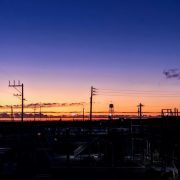Chemical plants play a major role in industrial processing, and the chemicals will be blended in and manufactured on a regular basis.
The chemical engineers, as well as the other workers, will have a responsibility to produce a variety of different products, and this will include some of the basic chemical products and the preparation that goes into the manufacturing of it. In this type of job, you will be responsible for producing some of the basic chemical manufacturing.
The Jobs of the Workers
Because of many different factors, the workers will have a few tasks set before them that they must tackle. For example, they will need to deliver the materials over to the processing areas, and they will dump the ingredients into operating machines that will cool, heat and agitate the chemical solution based on what’s needed. The problem comes in from a hidden danger where removing the covers on the containers can lead to asbestos exposure. When it comes to the people within this field, you have a couple different job descriptions:

When it comes to the people within this field, you have a couple different job descriptions:
-
Chemical Technicians
-
Chemists
-
Operators
-
Machine Setters
-
Tenders
-
Packaging and Filling Machine Operators
Big Business for the Economy
One of the essential contributors to the United States economies, this sector has been valued at around $555 billion annually. In fact, the United States has 14,500 chemical manufacturing facilities, and they are owned by around 9,000 different companies. This chemical sector is sometimes composed of smaller companies, and around 89 percent of them employ fewer than 500 people.
The Downside
While these chemical plants do contribute to the US economy in a good way, they have also been bad for the health of the people in some cases. For example, anyone who worked in these chemical plants from the 1930s to the 1970s may have been exposed to the asbestos-related products as a result. People often used this in the industry, however, because of how it had highly chemical resistant properties, which were good. The people who work in this environment are at a much lower risk than what they used to be because of how new regulation has weeded out the use of asbestos-based fibers in different products. The workers who were producing inside these plants were at a lower risk of exposure, but you could still potentially find it used in the building materials, the equipment and the machinery from before the 1980s.
The Products and the Locations
You had workers who were exposed to these different types of products. For example, the equipment and machinery would be one of the most common problems because of how the machines tended to overheat. Asbestos-based fibers were resistant to some of these chemical reactions, which was why the chemical plant workers would often come into contact with them.

In fact, it was almost an essential component of insulation. You would often see this used in the valves, pipes, pumps, furnaces, ovens, boilers and dryers. Building materials were also another popular place where it was used. For example, you might see it used as a cement block primer and elastomers.

Protective clothing was another area where this would be used for the chemical plant workers. Because this mineral was known to protect you from heat and burns, it often got used for this purpose. In addition, it was a mineral that was also resistant to many of the chemical reactions that could take place in the chemical plants. As a result of this, you would often find it used in the aprons, gloves, face masks and coveralls that people wore.

Exposure on the Job
The workers at the plants would oftentimes face hazards throughout the course of their lifetime at the job. Some of the toxic chemicals that could potentially come up were an obvious threat to many of the workers, but this carcinogenic mineral that was often used could be just as deadly even if its full effects didn’t take place until two or three decades later. The workers on the job who were the most at risk were those who repaired the equipment and those who helped with maintaining it.
Even the supervisors and other individuals who were working in this field could potentially be exposed to the dangers of it. Several lawsuits have been filed over the years. For example, Thomas Brown, a previous worker at a chemical plant, decided to file a lawsuit against Union Carbide Corporation when he claimed that he had been exposed to asbestos-related products while working on the job. The jury awarded Brown $300 million after the damages were done. This carcinogenic mineral has been known to cause cancer and a rare form of asbestos-related cancer called mesothelioma. If you or someone you love has developed it, you may want to speak with a lawyer.

